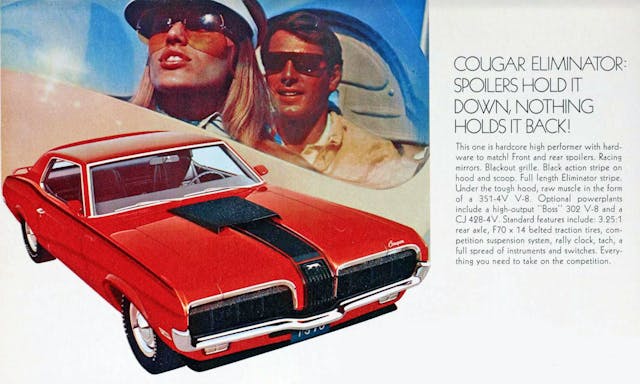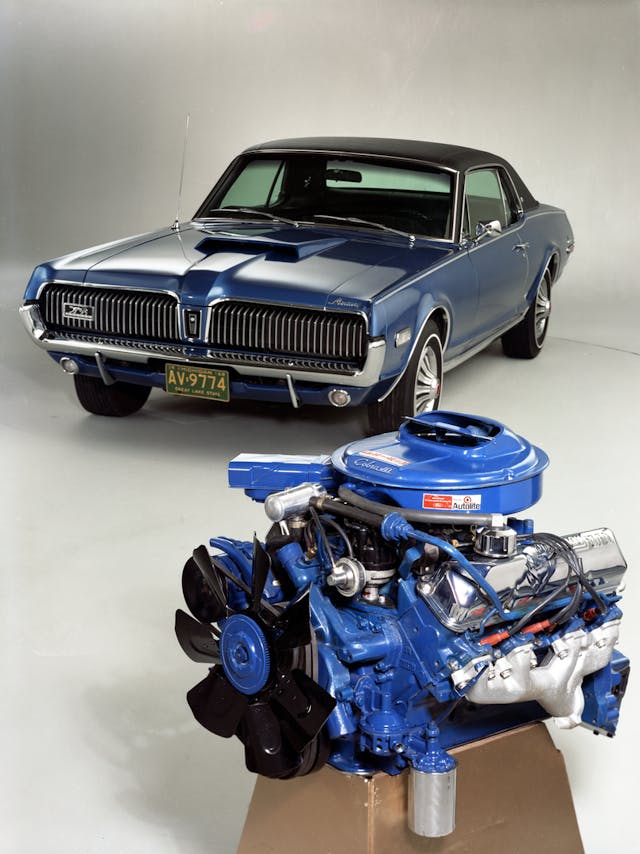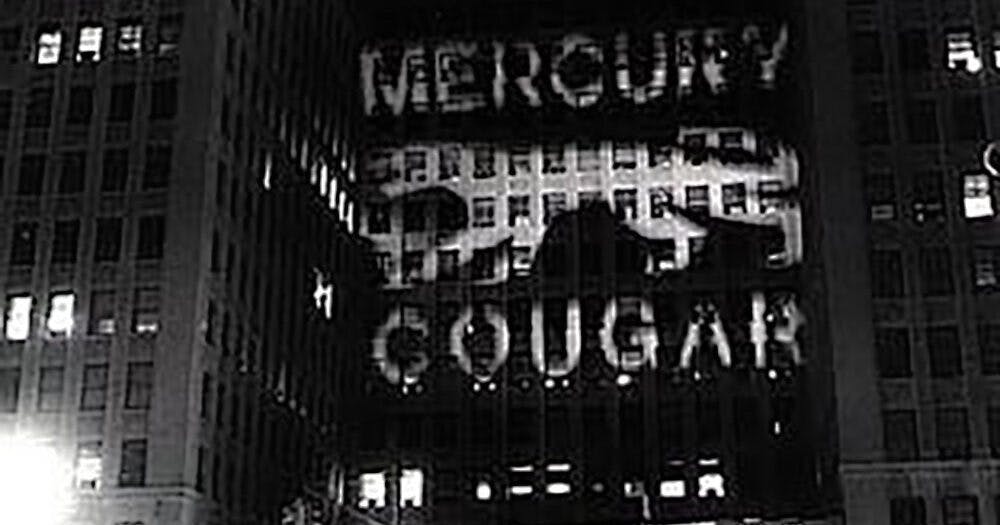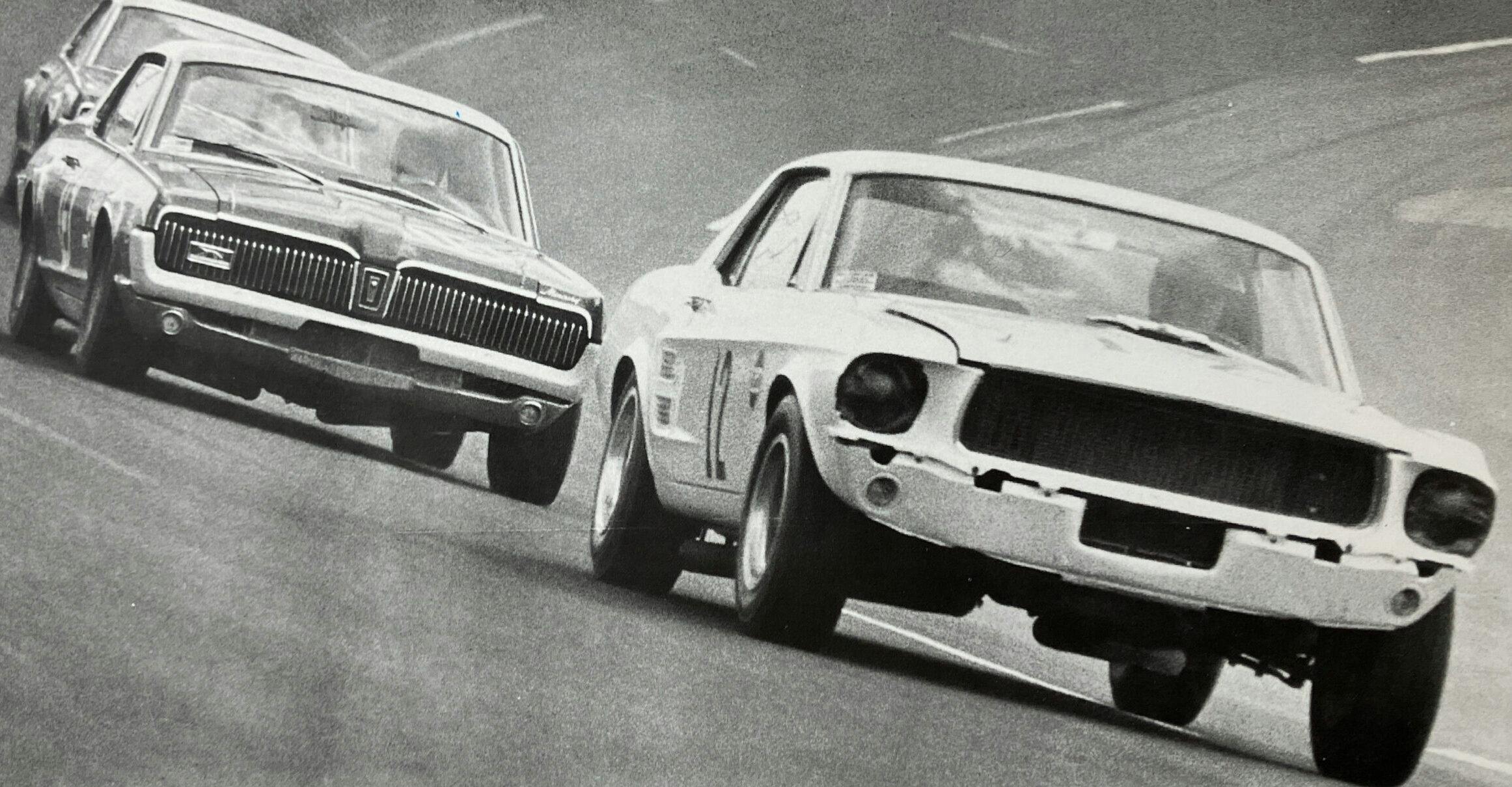More than just a face-lifted Mustang: The early Cougar market isn’t easily defined
“During the past few years, thousands of motorists have asked for a larger car than the Ford, with all the fundamental virtues and advantages of the Ford V8, and priced according to Ford standards of value.”
While the quote above was taken from a 1939 Mercury sales brochure, it encapsulates Mercury’s mission to spin off a version of Ford’s wildly successful pony car for themselves. Much like the Mercury’s prior successes, the 1965 Mustang’s blueprint easily translated into a premium pony car: more wheelbase with unique sheetmetal, a standard V-8 engine, memorable fascias front and rear, and an option package providing an interior akin to a luxurious Jaguar. It even received an appropriately feline name to boot: Cougar.
The Cougar slotted well into Mercury’s mission, as the aforementioned Jaguar-themed grand tourer was priced between the Mustang and the prestigious Thunderbird, and provided Lincoln-Mercury dealerships with another high-volume vehicle. It was a delicate balancing act, one that kept dealers on both sides of the Ford spectrum happy. It didn’t hurt that the Cougar was able to do everything a Mustang could, but with more space and grace.
More to the point, a top-spec Cougar XR-7 GT in 1967 came with Ford’s 390-cid FE motor, a handling-oriented suspension, and that ritzy leather/faux wood interior. It was priced disturbingly close to that of a base Thunderbird, but that only made the Cougar’s mystique even more romantic. Consider the first photo below, as Ford had the nerve to project the 1967 Cougar logo onto the GM building, sort of a public relations coup for their premium coupe. That’s certainly a moment in time we will never see again.
Then consider the Cougar’s competitive pedigree —with no less than Dan Gurney behind the wheel, it came within spitting distance of beating the Mustang in SCCA’s 1967 A-Sedan manufacturer’s championship. Off the track, adding the XR-7’s leather and burl wood(ish) trimmings gave the Cougar a fighting chance in its battles with aloof GT cars from Europe. A comparison test with an Aston Martin DB6 isn’t necessarily a trivial exercise: while the aforementioned Cougar XR-7 GT is longer and has a far more monstrous engine, the weights are similar and performance was shockingly comparable. That’s provided you neglect the Aston’s prestigious refinement and consider the Cougar’s more modest asking price. But again, this is another circumstance we will never see again.

That’s because time pauses for no one. By 1973, the now-second generation Cougar suffered from the same bloat and reduced performance as its Mustang brother, losing its famous electric shaver covered headlights in the process. The Malaise Era forever changed the pony car, so it’s no surprise that future Cougars went all-in on their luxurious heritage. The jump to the Ford Torino platform in 1974 signaled the end, even if the act created the best selling Cougars of all time. Subsequent Cougars moved to the Ford Fairmont, Thunderbird and even the Mondeo platform, and many examples were true to the performance/luxury value proposition of the original. Too bad that two-portaled ship had sailed, never to return.

With Mercury’s empty slip in the boatyard of automotive history came misinformation to fill its space. And one particular myth about the original Cougar endures: it is just a Mustang with different bumpers and lights. There are variations of that theme, but the lights/bumpers comment was something I overheard while waiting in line for the airport ticket counter. Of course I couldn’t leave well enough alone, as the slow burn of waiting for a plane ticket (pre-paperless days, mind you) got to me.
So I gently, courteously, reminded my fellow passengers that the first Cougar “shared almost nothing with the Mustang aside from the windshield.” That’s factual, but also difficult to argue in a public setting. The subsequent conversation about wheelbase, engine differences, and the Cougar’s standard equipment turned a few heads out of curiosity, but imagine if those folks had said that a Mustang was just a Falcon? That would likely have triggered an intervention from the TSA!

So what actually made the Cougar so special might be lost to time, but perhaps some data will right the ship. The Cougar may live behind the Mustang’s long shadow, but more younger folks are taking interest in the old cat. Millennials and Gen-X make up 19% and 35% of interest (insurance quotes, respectively) these days, and we expect Gen-X to be the largest portion of first generation Cougar owners in the near future. Boomers are currently at 36%, while Gen-Z and Pre-Boomers are at 5 and 3%, respectively. Cougars like the 1970 Eliminator (above) are no slouch in terms of market valuation, as those spoilers really speak to the market.
The days of pulling a big-block 1970 Cougar out of a barn for a few hundred clams is long gone, and the cosmetic tweaks offered by the Eliminator provide period-correct style for roughly 85% more than an XR-7 with the same Cobra Jet motor. The same applies to the base model when Cobra Jet–equipped, as it is about half the price of the XR-7 above it. Last year was a good time to own a 1970 Cougar, as prices shot up across the board and most have plateaued ever since. Muscle and pony cars from the heyday of Detroit performance set a high watermark for many iconic automotive brands, and high tide lifted all boats, even those made by the Lincoln-Mercury division. Provided they are the ones with spoilers, racing stripes, and names that evoke the performance expected from the era, of course.
The earlier first-generation Cougars aren’t fairing quite as well, possibly because more units were sold (150,893 units in 1967, versus 72,343 in 1970), there was a smaller big block, and the emphasis was on touring luxuries instead of overt, racy trim packages. But the big block 1967 Cougars still do well, spiking in 2022 just like the 1970 models. The small blocks have been more volatile over time, and a 390 big block Cougar is worth 25% more than a small block XR-7, and a whopping 44% more than a base small block Cougar.

It’s ironic that the original Cougar had strong sales when new, but its focus as a high-value alternative to Jaguar hasn’t reaped the muscular, big blocked transaction prices generated for the revised 1969-70 model in 2023. On the plus side, this makes the 1967 models more approachable for the younger generations that are clearly finding good reason to visit The Sign of The Cat. While a tragic amount of the Cougar’s mystique has been lost to the sands of time, the diverse entry points and significant interest from Gen X and younger buyers may well bring in more soon-to-be loyalists. Those new, true believers will understand what made the first-generation Mercury Cougar special over its Mustang counterpart.
***
Check out the Hagerty Media homepage so you don’t miss a single story, or better yet, bookmark it. To get our best stories delivered right to your inbox, subscribe to our newsletters.






My 68 XR7 is my daily driver 133k. Mint/stock. Love it. Had a 67 XR7 as a teenager. Attention getting car to the degree that we get stopped on the road from people making offers. I intend to die with the car.
loved the first series cougars plateauing with the 1970 models – always liked them better than mustangs – maybe that’s why i lean more towards luxury autos in general. sadly they lost their way in future generations and became nothing more than a name of a car that didn’t seem to remember what it was when it was born.
Back in ’66 my dad was looking for a new commuter car. I chimed right in (I was eleven) and told him about the coolest car with hide away headlights, sequential turn signals and a built-in 8-track take deck!
He bought into my passion and 7 years later it was my high school dream car!
Seams like a lot of people didn’t have good experiences with them. I have had’64 1/2 to ’68 mustangs
and they were no better then the 4 67-68 cougars I’ve had. A little more weight with the much more comfortable seats and options but I think the body lines are even better then the mustangs. They don’t have the following of mustangs even though they are initially the same so they can be found for much less!